In the previous article on easy family poses in our Family Photography guide we learned how posing the family creatively can create beautiful shots for the family.
Poses, however, are only one side of the coin. While the family is posing, you will also need to compose the family properly with your camera.
Most family photographers tend to take inspiration from other family photographers’ work and apply it to their art form.
However, it can become too repetitive if everyone is applying the same presets, same editing style, same poses for families, and same angle to every photo in their portfolio.
Not to mention, your work will be easily mimicked and mediocre. This creates “pricing wars”, where to get clients, photographers start cutting down their prices while offering the same kind of work.
To make your pictures really stand out and make them look like a piece of art, the composition of your photos can be a BIG differentiator among your photography peers.
What are compositions?
Compositions are a set of rules or guidelines used in different forms of art (not just photography) to make the subject in the frame appear more pleasing or satisfying to the brain.
As most of it is dependent on the surroundings and location, copying someone’s composition is not as easy as copying other things.
Creating the best use of the surroundings and elements can level up your family photography game.
Here are 14 composition techniques family photographers can try and practice to make their photos look more professional.
- Rule of thirds
- Along the Horizon
- Juxtaposition
- Frame within the frame
- Leading Lines
- Use of Negative Space
- Rule of odds
- Symmetrical
- Dynamic Composition
- Different Viewpoint
- Not everything has to be in the frame
- Power Of Colors
- Selective Focus
- Break the rules
Rule of thirds
The most basic level of composition in photography is the rule of thirds and is a great choice to start practicing composition for family photographers.
Unlike the name suggests there is no such hard and fast rule for composition. Years of research have laid down these guidelines to help photographers make their photos look more captivating than they would otherwise.
In the rule of thirds, the frame is divided into 9 rectangular boxes of the same size by an intersection of 2 horizontal and 2 vertical lines.
The subject is placed at one of the vertical lines and the focus is preferably at the intersection of both lines.
In most of the photos, family photographers tend to keep the family in the middle of the frame.
Using the Rule of thirds composition could be a great change for your family photos. This works really well with a family of 3 or 4 where the couple is standing or hugging at one of the intersections of the grid./
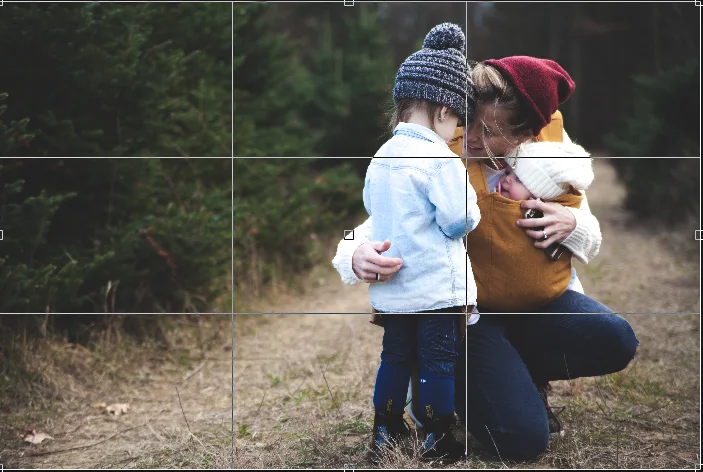
In family photography sessions, having good lighting and editing will be an added bonus to the family portrait.
When using vertical lines the composition will be hard to use if the family is too big as you will need to keep the family aligned on the line.
In such a case, you might want to align the family on the horizontal line.
Along the Horizon
This composition works out great if you are shooting family photography outdoors at the beach or on an open farm where the horizon is visible. Make sure your photos are not cutting any necks with the horizon as it gives an uneasy feeling to the family photos.
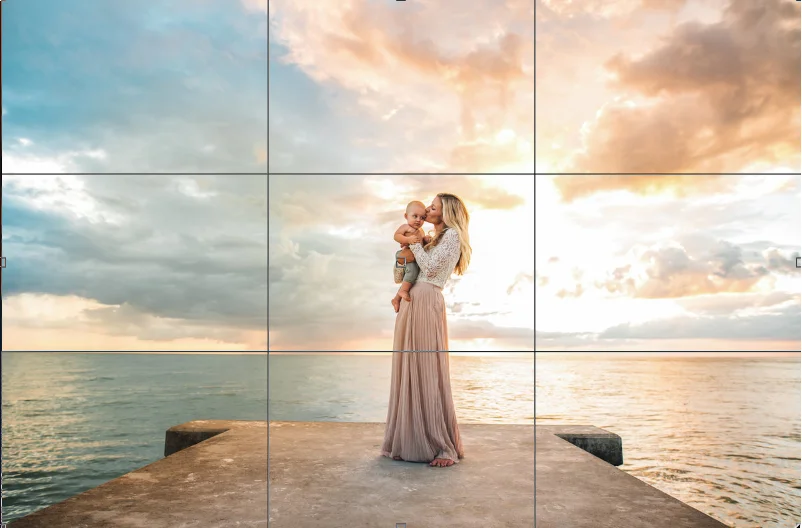
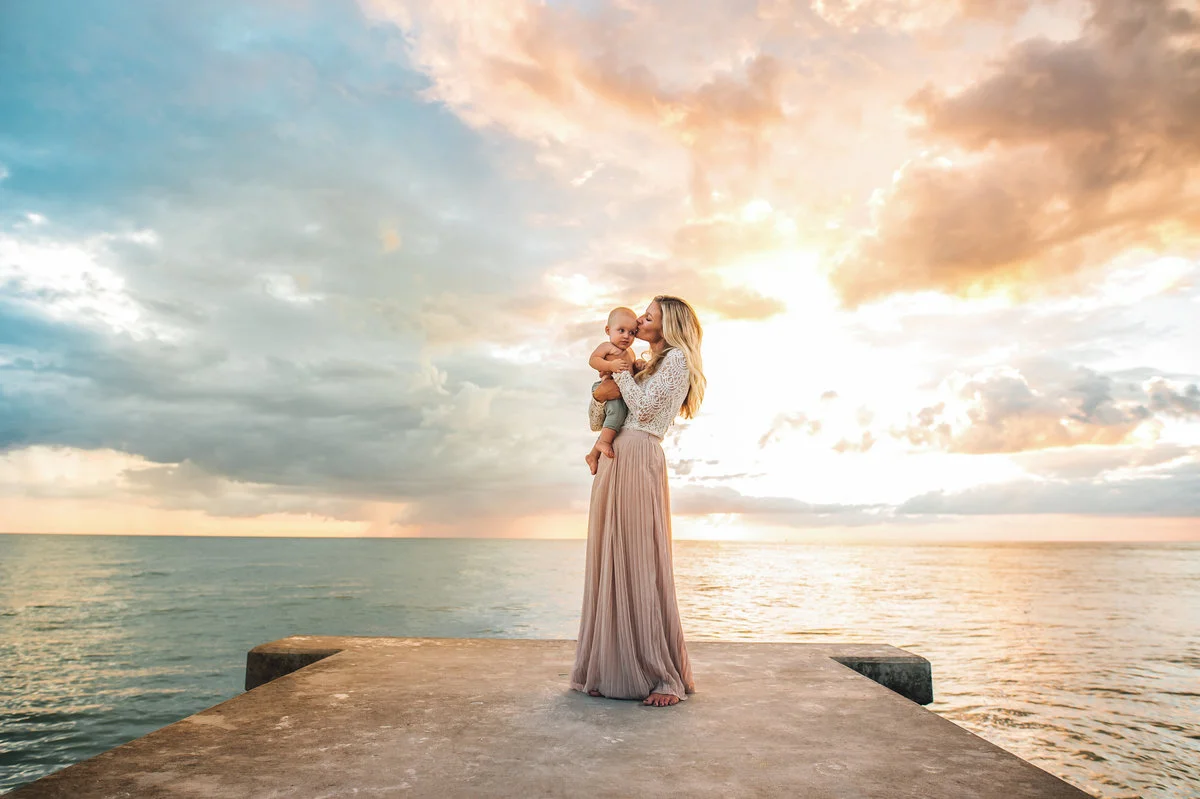
Source: Nicole Kristin from http://nicolekristinphotography.com/
Juxtaposition
Juxtaposition is one of the most powerful compositional techniques used in photography.
Juxtaposition refers to the act of including two or more elements together to show the differences or similarities of one another creating a contrasting effect to the image.
This is hard to execute for family photographers due to the limited elements present in the surroundings but once captured in the right way, it can result in amazing family photos.
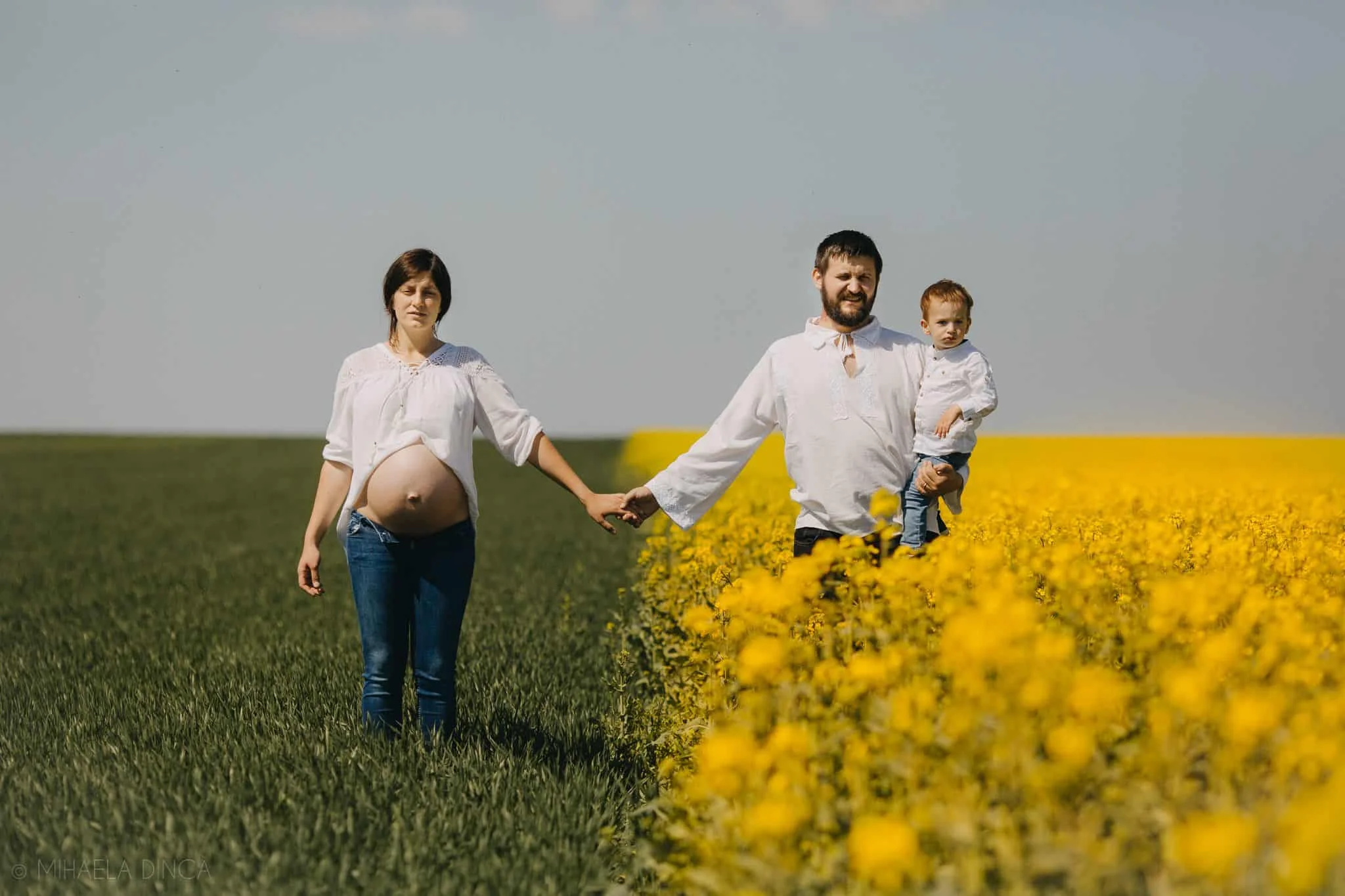
Source: Mihaela Dinca from https://www.mihaeladinca.com/
This family photo beautifully captures the contrast between the field full of flowers and plain grass on a farm while keeping the family aligned on either side of the field.
Or If you are shooting a biracial family, you can beautifully capture the differences in their skin color like this photo and create a balance in the picture. Props to this family Photographer, Natalie, who captured this couple so beautifully with their baby!

Source: Natalie Houlding from https://nataliehouldingphotography.com/
Try to find more such differences or similarities around you or in your subjects to achieve great results in your photos.
Frame within the Frame

Creating some sort of frame from the surroundings inside your photo to highlight your subject is another creative composition family photographers can try to enhance their creativity.
Family photographers need to keep an eye on their environment for achieving this kind of composition in their family photos.
Creating a frame using a window, glass, or door and capturing the family inside a frame can create interesting and creative photos.
Leading Lines
Capturing lines in your photos and placing your subject where they are leading is a great way to gather your viewers’ attention to the subject. Our brain tends to follow and search for lines.
Lines made out of stones, roads, bridges, or walls- anything can work.
Capturing photos while keeping lines in the frame and placing your subject where the lines lead is a great way to shift your viewers’ attention to the subject.


Family photographers can make great use of architectural structures such as roads or fences to their favor and capture the family where the line is leading to.
Use of Negative Space
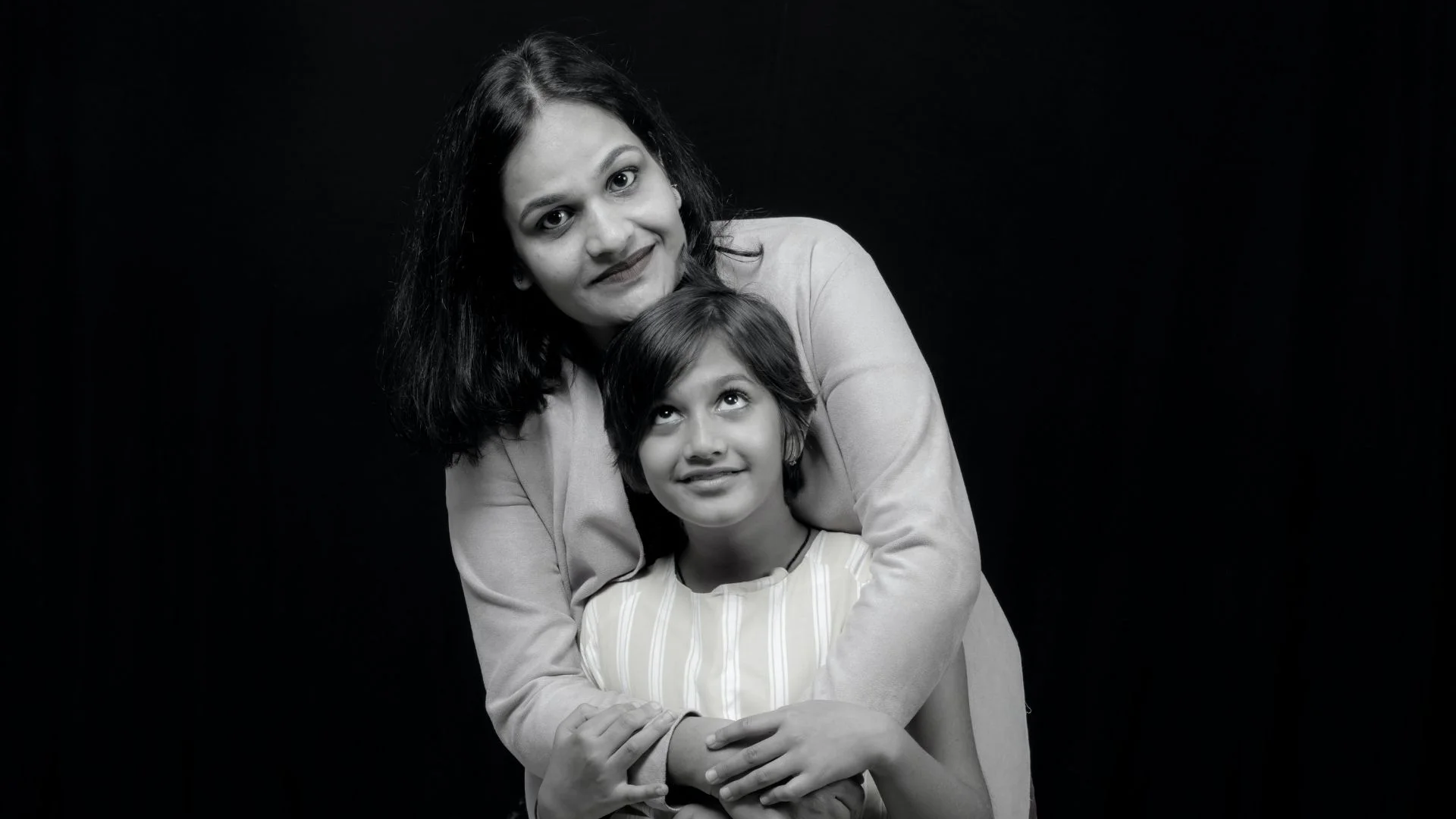
Keeping a large amount of negative or empty space in the frame around your subject is a great way for your subject to look more prominent. Moreover, this also gives your subject more room to breathe.
If you are working in a family photography studio you can use a variety of backdrops to achieve this composition.
Family photographers can use different backgrounds like an empty wall or an open area with minimal distractions to achieve this composition.
Rule of odds
This rule suggests that having an even number of subjects divides the attention of viewers and is very distracting. Even though this is not true in all cases, family photographers can leverage this and keep the family in odd numbers in their frame.

The photographer also used the Rule of thirds here apart from rule of odds to make the photo look more pleasing to the eye.
Do your clients have 4 children? Try clicking some photos with all the kids and the father alone and see if the result is better than all 6 members.
Symmetrical
Symmetrical composition is when the photograph can be divided into two similar-looking parts.
Symmetrical figures are again, very attractive to the eye.
Family photographers can make use of doorways, bridges, trees, reflections, or even family members themselves can dress up in a similar dress to make the photo look symmetrical.
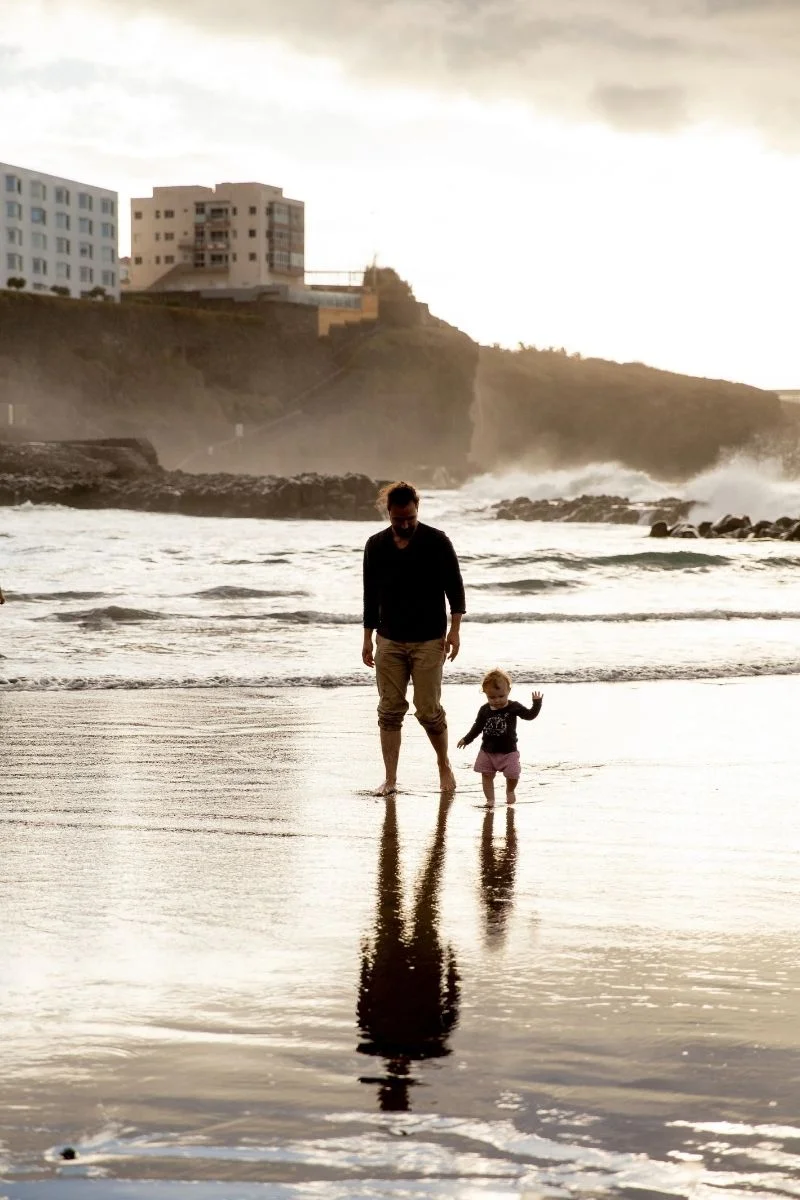
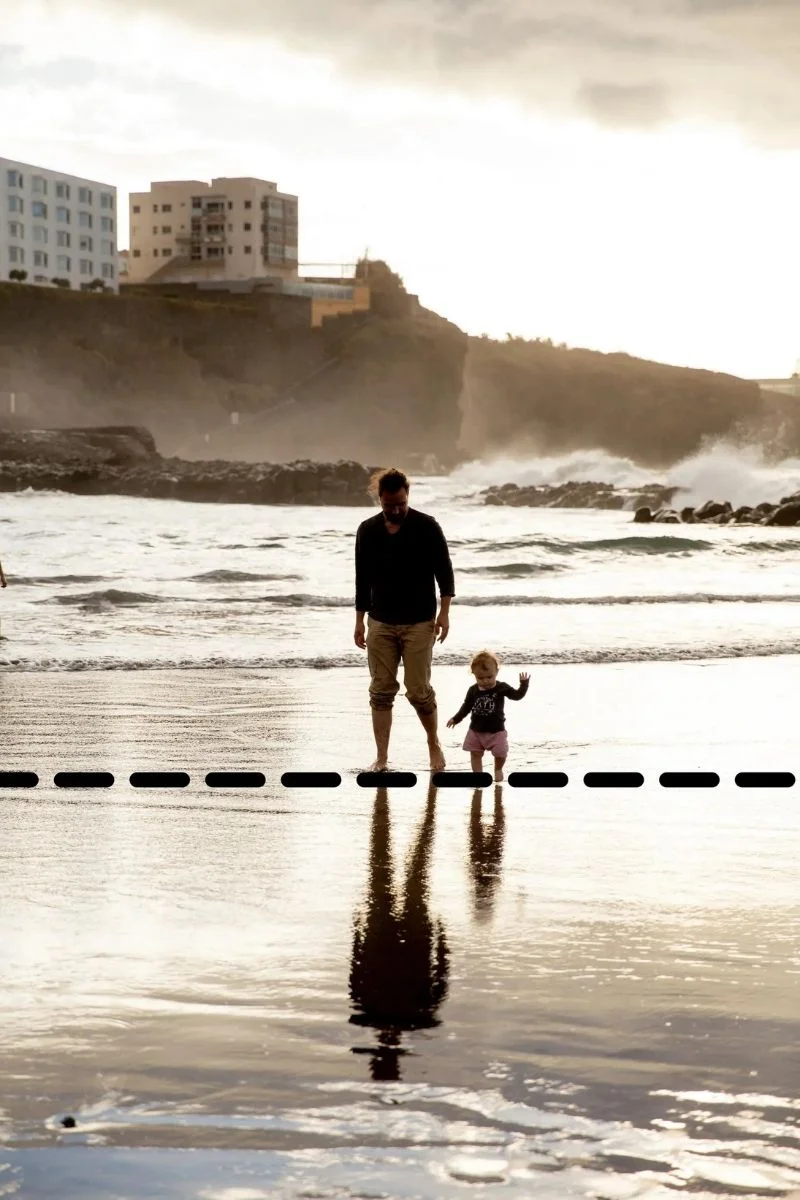
Here the reflection of the subject is creating a symmetrical look when the photo is divided in half horizontally, but pictures can also be symmetrical in a vertical division.
You can create a symmetrical figure of the family out of their reflection in a mirror or water, or simply make them wear similar clothes to achieve a symmetrical look in the photo.
Dynamic composition
Dynamic composition is a setting where the subject gives a sense of movement in the photo. Family photographers use this composition to make the family look more candid and natural.
If the family is walking outside, emphasize the area where they are coming from or where they are heading to. These kinds of portraits turn out to be great storytelling photos.


The dynamic composition also works out great with small kids as they move a lot!
Different View Point
Capturing photos at eye level can soon become repetitive. Try to compose a photo from a different view such as the bird-eye view where you shoot the subjects from sky level or the opposite, ‘worm-eye view”, which is shooting the subjects by lying down.
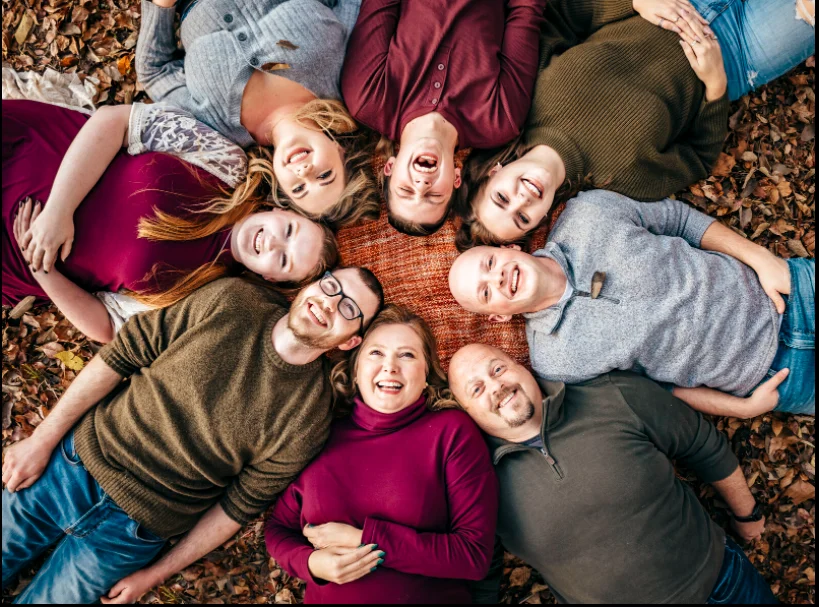
Source: Brandi Morgan from http://www.brandimorganphotography.net/
Family photographers can create wholesome bird-eye view photos by capturing the family lying together in a park or their backyard.
If the family is too big you would want to capture the photo from way above the ground. In that case, try using a ladder to get the perfect shot.
Not everything has to be in the frame
This is the opposite of the earlier discussed “negative space” composition.
Instead of having a lot of blank and empty space in the frame, the photographer keeps only a few important elements in the frame while cutting the other element.
This focuses our attention more on the main subject with their surroundings.

For example, family photographers can zoom in like this with toddlers as they are mostly overlooked in group photos.
Keeping the parents cut off from the frame will give the baby some spotlight and will bring more variety to their album.
Power Of Colors
Color is another visual element that our brain gets very attracted to.
As a young photographer, growing up and capturing every sunset or a pretty flower in the garden was just our brain getting attracted to the bright colors.
Using the right colors to compose your photos can attract the viewers’ attention easily. To know which colors to choose for your photos, check out this page.
In family photography, you can use complementary colors to give your subjects more contrast and make them stand out.
To achieve this, you need to make the family wear one of the primary colors and have a secondary color as a background. This will easily direct all the viewers’ attention to the subject.
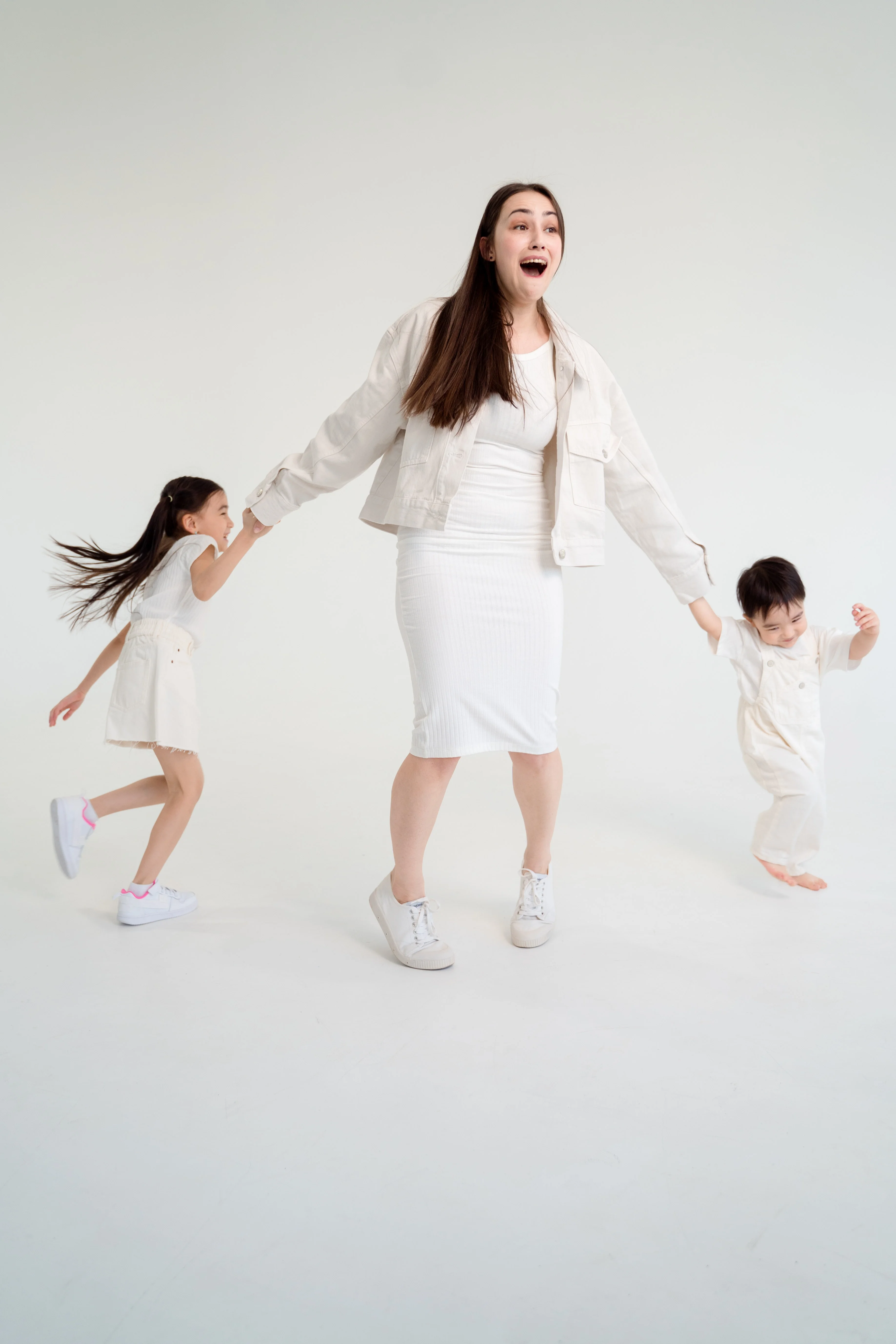

You can also use monotonic colors to give your shoot a theme. For this, even the background color should be the same as the subject. However, it is much harder to be creative in your photos when you have only 1 color to play around with.
Selective Focus
Playing around with depth of field through the aperture is another creative way to direct the viewers’ attention toward the subject.
In selective focus, you only keep the main subject in focus while keeping a shallow depth of field which gives the subject more contrast and catches the viewers’ attention.

For family photographers, you can use this composition technique to keep the family or a member of the family (kids!) in the spotlight.
Somehow, keeping the parents blurry in the background gives a much deeper meaning to the picture.
Break the rules
As I mentioned in the rule of odds, having an even number of subjects in the frame is not necessarily bad. These compositions are not some rules you will have to live by or follow every time in your photography career.

It depends on the judgment of the Family photographer if their photo has to follow a certain composition for it to be an amazing picture.
Try creating unique composition techniques which don’t follow any existing compositional rules. You will be surprised by the outcome of such family photos.
Conclusion
Have fun trying and experimenting with these composition techniques and with enough practice you will have an outstanding family photography portfolio.
After you have mastered all these techniques you will be able to make decisions if a family photo needs to be taken in a certain composition or if it is better off without it.
If you are a family photographer, you would not want to miss out on shooting at beautiful locations for your clients.
Check out our next blog on “Best locations to shoot for family photographers”!